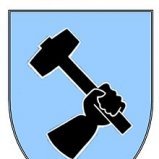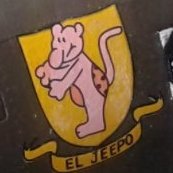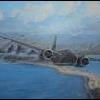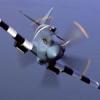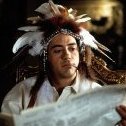-
Posts
770 -
Joined
-
Last visited
About Super Aereo
- Birthday 15/07/1965
Contact Methods
-
Website URL
http://
-
ICQ
0
Profile Information
-
Gender
Male
-
Location
London UK
-
Interests
Aviation history, camouflage and markings, flight sims.
Super Aereo's Achievements

Obsessed Member (4/9)
169
Reputation
-
IIRC, recent research established the existence of at least three distinct but co-existing variants for both 81 and 83. German industry was widely dispersed by then and I would guess - as you pointed out - that maximising output was the main imperative...
-
The "problem" (from their point of view) is that there is exactly zero evidence for this, but hey, whatever makes them happy, I guess... 😉
-
IIRC, II/JG 77 only had 2 (or 3?) confirmed victories while using the C.205, so it is highly unlikely that any German pilot made ace while flying the Macchi...
-
I think it was included in the colours to be used in the OS-Liste for the type. It certainly was present as a mottling colour in the painting instructions for the Hungarian Me 210, which were a direct translation of the German ones...
-
I believe the colours to be used for the side mottling included RLM 02 as well as 74 and 75.
-
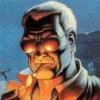
Bf-109E Spinners - Help me understand please
Super Aereo replied to nheather's topic in Aircraft WWII
Yes, there is a volume 2 in French -
I think the photo of the cow might be colorised...
-
Breda Ba.25's were originally finished in Alluminiata (aluminium dope), but from 1941 all aircraft used as basic trainers (aerei scuola di 1^ categoria) were to be repainted in Bianco Avorio, a very light khaki colour. This might be what is visible here. I think that the Italian insignia on the rudder would have been painted over, seen that the decal with the state symbol is also missing. Just my opinions, of course.
-
A red filter will indeed make bright red look white, but it will also darken the sky considerably, same with any green trees and grass, while quite possibly lightening yellow as well. And the yellow fuel triangle still looks darker. The whole photo would look different, imho. As far as 111 Sqn. Hurricanes are concerned, one has to bear in mind the possible effects of light reflection and film development. Other shots from (presumably) the same film roll show clearly the red centres. https://pin.it/XNGErQ1 https://www.surreymilitaria.com/en-GB/wwii-british-photographs-and-ephemera/the-kings-air-force-magazine-1939/prod_10122 The main thing to bear in mind is that while a bright will show up white with a red filter, a dark red will not, because the light intensity will not be the same, but far minor.
-
You are right, my mistake there...
-
With all due respect to Troy and others, for what concerns the "Me109-G14/AS/R3 III.9.JG300 ex-I.1.JG3 White1 WrkN165693 with Tall T3-Rudder & Fo987 Deep Oil Cooler & White Fuselage Band & Team of Oxen Tows Aircraft to Its Dispersal At Juterbog AirBase, Germany September, 1944" Note, standard wheel hub colour was black. so red hub, number and band. there is simply no possible combination of film and filters that would show red as white in b/w and show it with the same tone as the white number 1. What I can see there is just an aircraft which still has the white fuselage band from JG3. Just my two cents.
-

LFI B-17C/D in Camouflage Paint with Star and Bars Insignia
Super Aereo replied to e8n2's topic in Aircraft WWII
The colours could well be the Hawaiian Air Depot camouflage scheme -

Bf 109G-14/AS 780356 ANR colors? and built from a G-10?
Super Aereo replied to ruudster's topic in Aircraft WWII
"Camouflage and Markings of the Aeronautica Nazionale Repubblicana" by D'Amico & Valentini is possibly still the best reference work for ANR fighters, and decently priced second-hand copies can often be found on eBay. I have also seen "pirated" copies circulating on the web in PDF format. For what concerns the differences between variants, the books by Mermet are still the best, although "Messerschmitt Bf 109 late versions camouflage and markings" by Wolovski is also rather good. I'd like to add that the G-10 actually entered service just after the first K-4 did, if I remember correctly... -
IIRC, Merrick mentioned the use of a 02 overspray to tone down the 65 on the fuselage sides of Bf 110's in the 71/02/65 scheme. I am in the office and cannot check, but it was in the first volume (I think) of his Luftwaffe Camouflage and Markings 1935-45 work published by Classic
-
I know, slip of the finger, I am currently dying of hay fever.... 🤧




